
By:
- Erika Johnson
Published Date
By:
- Erika Johnson
Share This:
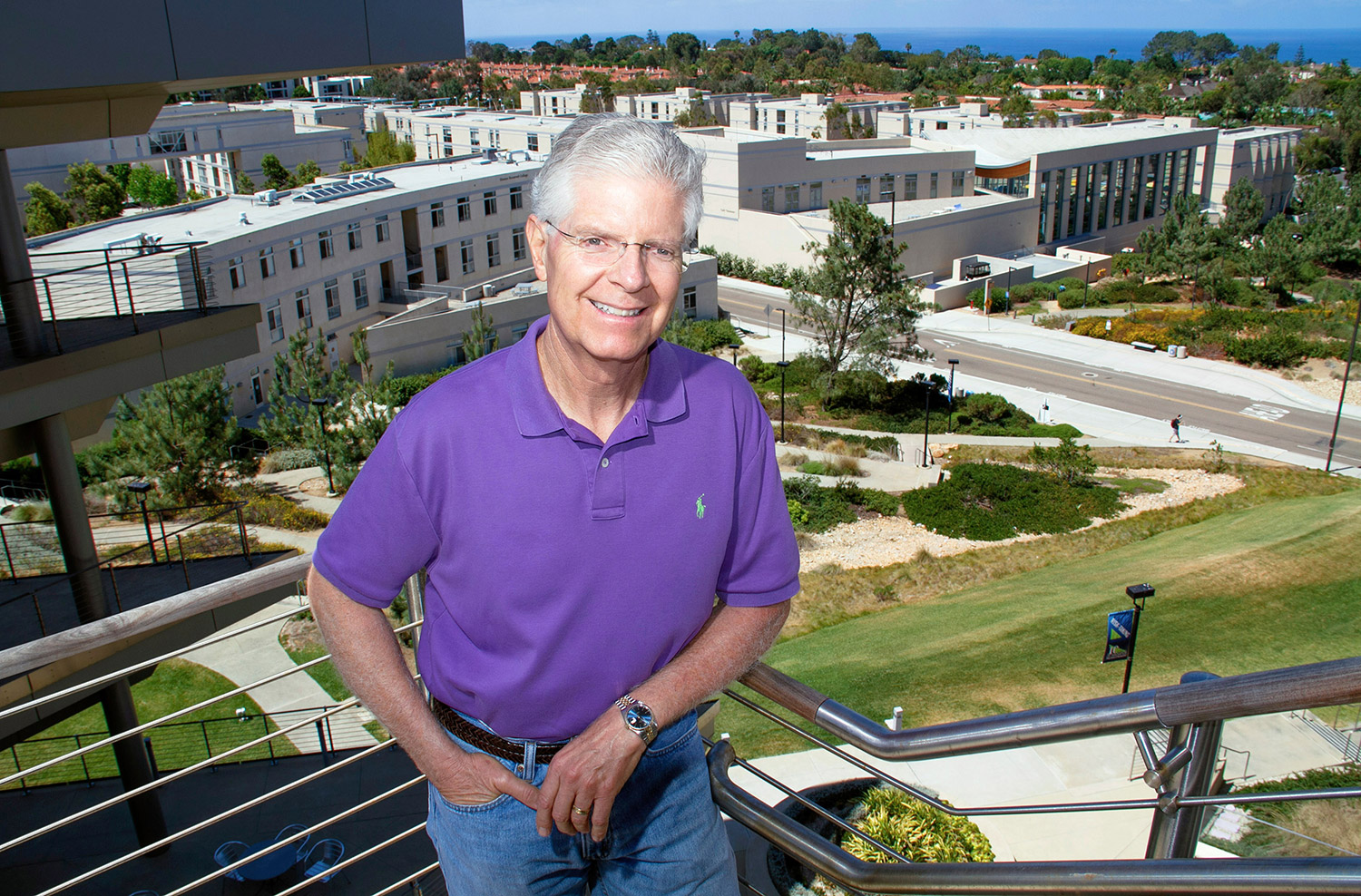
Boone Hellmann. Photo by Erika Johnson/University Communications.
New Green Building Tours at UC San Diego to Blend Architecture, History and Sustainability
Early architects at the University of California, San Diego dreamed of a monumental campus. A grandiose amphitheater and bell tower were to dominate the center of campus and each of the six colleges would feature expansive plazas connected by grand promenades. After the construction of Revelle College, public spaces evolved into more intimate campus neighborhoods with organic corridors that invited interaction. Today, campus architects are careful stewards of the land, incorporating sustainable building practices that channel the surrounding ocean bluffs, canyon valleys and eucalyptus groves.
Blending architecture, campus history and sustainability, new Green Building Tours will be offered starting this winter, hosted by the UC San Diego Visitor’s Tour Program in collaboration with UC San Diego Facilities Design and Construction and Housing and Dining Services. The two-hour Sunday bus tour will educate participants from the campus and community about how the campus’s LEED-certified buildings—Leadership in Energy and Environmental Design, a third-party certification program developed by the U.S. Green Building Council—creatively employ sustainable design techniques and energy-efficient strategies. The tours, which are free and open to the public, will be held quarterly.
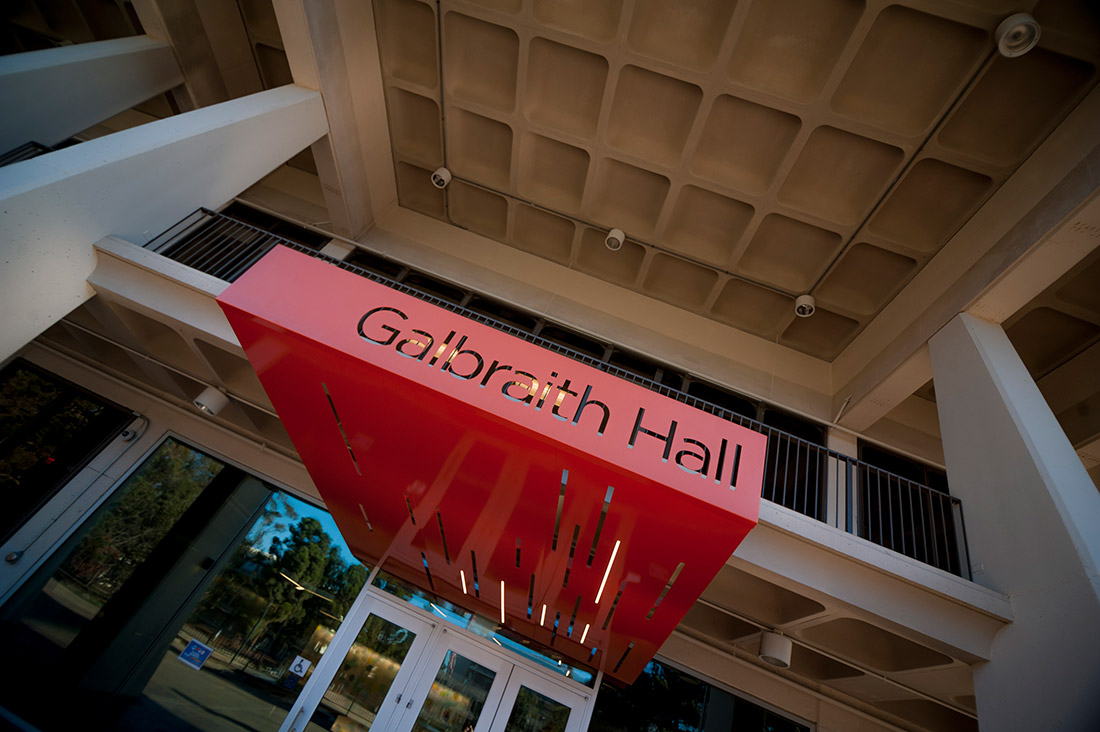
Galbraith Hall. Photo by Erik Jepsen/UC San Diego Publications.
Boone Hellmann, who spent 28 years as campus architect at UC San Diego, will serve as one of the tour guides, providing unique insight about how the campus’s LEED building certification boom has served to position UC San Diego as one of the “greenest” colleges in the nation. “UC San Diego has always been an institution that embraces the opportunity to be a trailblazer, and that includes sustainable architecture—it’s part of the culture here,” said Hellmann.
Hellmann played a key role in the 1989 Master Plan Study for UC San Diego, the first plan that incorporated sustainable building guidelines. Centered around five development themes—neighborhoods, university center, academic corridors, the park and connections—the plan prioritizes open space and defines ecologically sensitive areas to be preserved in perpetuity.
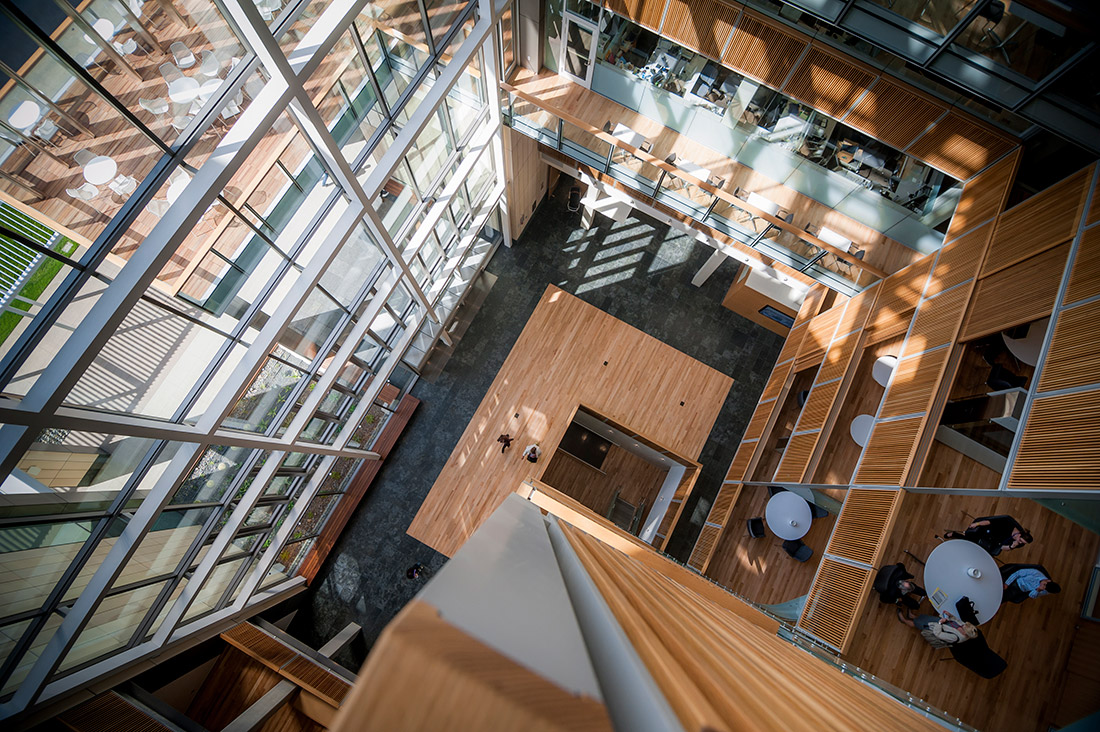
Biomed Research Facility. Photo by Erik Jepsen/UC San Diego Publications.
“This plan was the first to articulate environmental stewardship at UC San Diego,” said Hellmann. “LEED certification wasn’t around yet at this point, but this was the first step in creating a symbiotic relationship between the natural landscape and the structures that inhabit it.”
UC San Diego received its first LEED certification in 2009 for the Robert Paine Scripps Seaside Forum. Today, there are nearly two dozen LEED-certified buildings on campus, including two platinum—the Charles David Keeling Apartments and the Marine Ecosystem Sensing, Observation and Modeling (MESOM) Laboratory at Scripps Institution of Oceanography. All major renovations and new construction on University of California campuses must meet at least LEED silver certification (there are five levels possible—certification, bronze, silver, gold and platinum) and outperform the current state energy code by 20 percent. By 2020, the UC campuses have a goal to reduce greenhouse gas emissions to 1990 levels and by year 2025, UC strives to be a consumer of 100 percent carbon neutral energy.
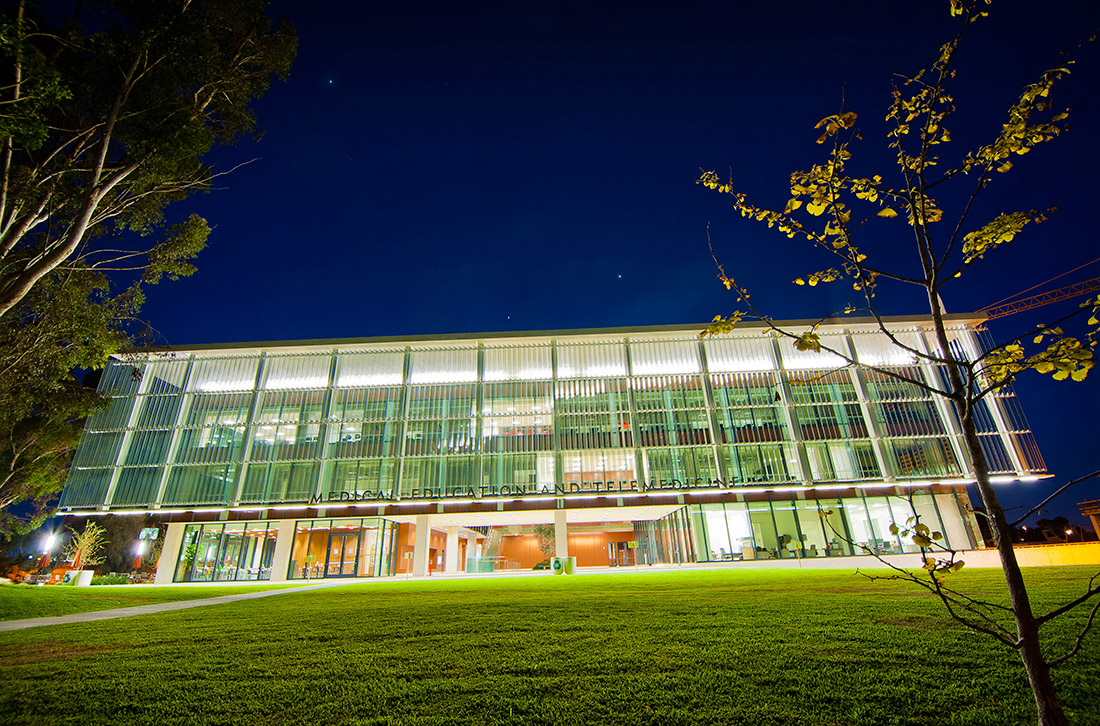
Medical Education and Telemedicine. Photo by Erik Jepsen/UC San Diego Publications.
The LEED program ranks all types of buildings in terms of water efficiency, energy and atmosphere, materials and resources, indoor environmental quality and more. In the past five years, UC San Diego structures have consistently been awarded top certification by capitalizing on the elements that dominate the region—temperate sunny days and cool ocean breezes—while working to address challenges like drought. Strategies include providing exterior sunshades to block summer heat, channeling ocean breezes with operable windows or wind scoops, using reclaimed water to irrigate drought-resistant landscapes, solar thermal heating, and more.
“In the 1960-70s, it took massive amounts of energy to make people comfortable, and buildings became a hermetically sealed space,” said Hellmann. “Now, we strive for equal indoor and outdoor balance—if there is enough ambient light, you don’t need artificial light. It’s a mutually beneficial system; you get to enjoy the outdoor elements and use less energy.”
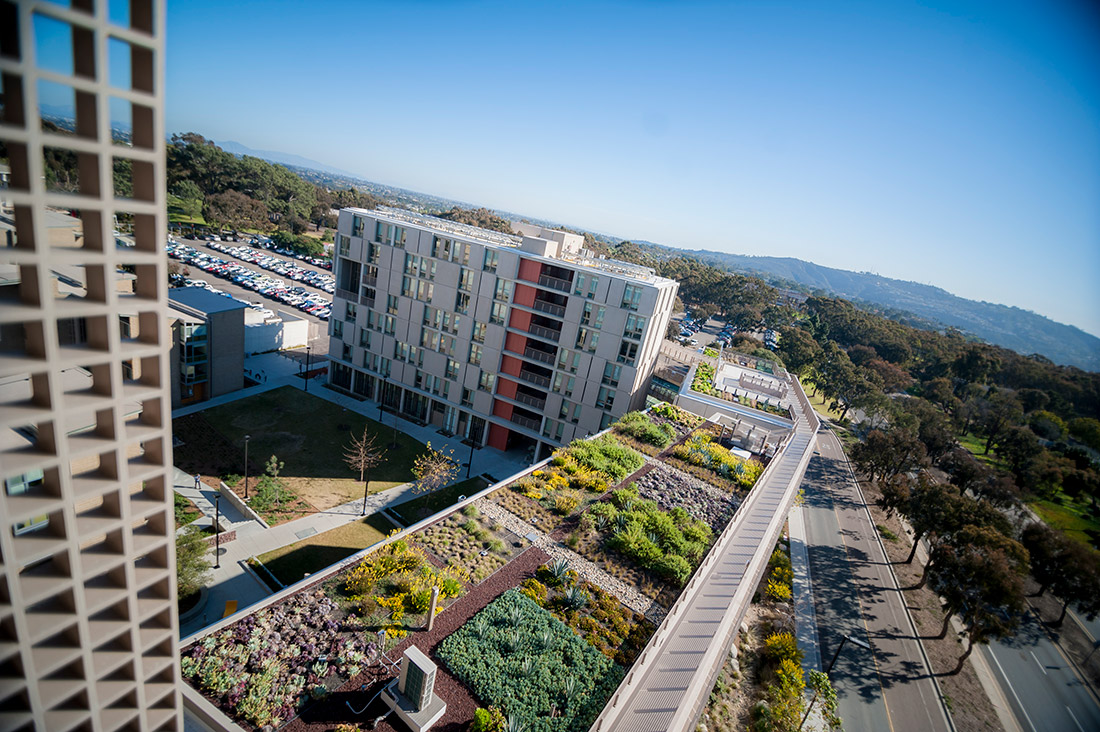
Keeling Apartments. Photo by Erik Jepsen/UC San Diego Publications.
Green Building Tours will be held quarterly and will feature the newest-awarded LEED buildings across campus. The tours are popular and are filling up fast—the first two tours in December and March are full; however there is another planned for June. For more information, visit the UC San Diego Public Tours website.
Share This:
Stay in the Know
Keep up with all the latest from UC San Diego. Subscribe to the newsletter today.


